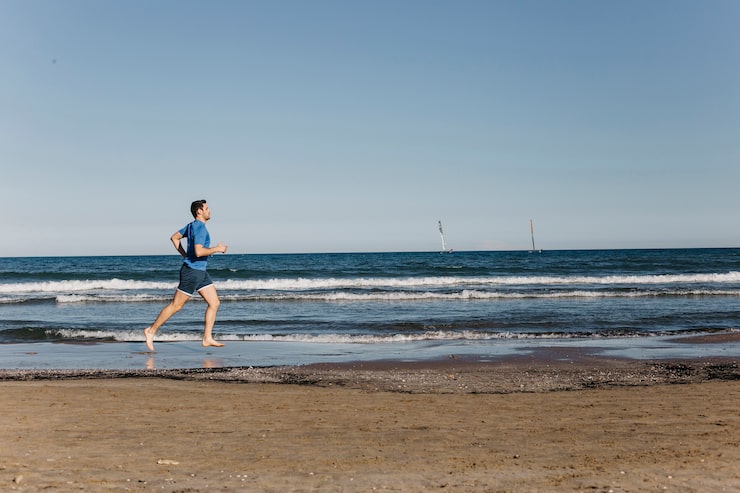Running barefoot is becoming more popular, with many people saying it improves balance and foot alignment. Before you try it, though, it’s important to know both the benefits and the drawbacks.
This post looks at whether barefoot running is a good fit for different types of runners — from competitive distance runners to casual joggers. Read on to learn the pros and cons of leaving your shoes behind.

Pros
1. Helps Keep a Natural Gait
Our bodies are built to run without shoes, and regular cushioned running shoes can sometimes change the way you move. Running barefoot encourages a more natural stride and posture, which can lower the chance of overuse injuries.
2. Strengthens Foot Muscles
Without the support of shoes, your feet work harder. That extra work builds the muscles in your feet, improving stability and balance. Barefoot running also boosts proprioception — your awareness of where your body is in space.
3. Encourages Better Form
Barefoot running tends to make you land more lightly and pay attention to how your foot strikes the ground. That often leads to better running form and can reduce injury risk. Thin-soled barefoot shoes also let you feel the surface beneath your feet, so you can adjust from a heavy heel strike to a midfoot or forefoot strike if needed.
4. May Lower Injury Risk
Some people find barefoot running reduces injuries because it helps them run with better form and feel the ground more. You’re less likely to land too hard, and problems like plantar fasciitis can be less frequent for some runners.
Cons
1. Higher Risk of Cuts and Bruises
Running without shoes exposes you to sharp objects like rocks, glass, and debris. New barefoot runners are often more likely to get cuts or bruises, so picking safe routes and surfaces is important.
2. Requires a Gradual Transition
Switching from shod to barefoot running takes time. Start with short runs and slowly increase distance and speed so your feet and legs can adapt. Rushing the process raises the risk of injury.
3. Not Right for Everyone
Barefoot running isn’t ideal for every foot type. Runners with flat feet or very high arches may find it uncomfortable. If you’ve had past injuries, or if you have nerve damage from conditions like diabetes, check with a doctor before trying barefoot running.
4. Lacks Cushioning
Running barefoot offers little to no shock absorption. That can be a problem on hard surfaces or in cold weather. In rough terrain or very cold conditions, shoes may still be necessary to protect your feet.
Choosing the Right Barefoot Running Shoes
Lightweight and Flexible
Barefoot shoes should feel light and flexible so your feet can move naturally. A wide toe box helps your toes spread and grip, and good traction is important for different surfaces.
Some Cushioning
Even minimalist shoes can use a bit of padding for comfort. Look for modest cushioning in the heel, midsole, and forefoot if you need it — how much depends on your personal needs.
Minimal Heel-to-Toe Drop
Choose shoes with little or no heel-to-toe drop. This lets your foot move more naturally and can improve form and efficiency.
Durable Materials
Pick a pair built to last so you don’t have to replace them often. High-quality materials stand up to regular use without wearing out quickly.
Conclusion
Barefoot running can strengthen your feet and improve technique, but it must be introduced carefully. Take your time adapting, choose suitable footwear if needed, and pay attention to your body to reduce the chance of injury.